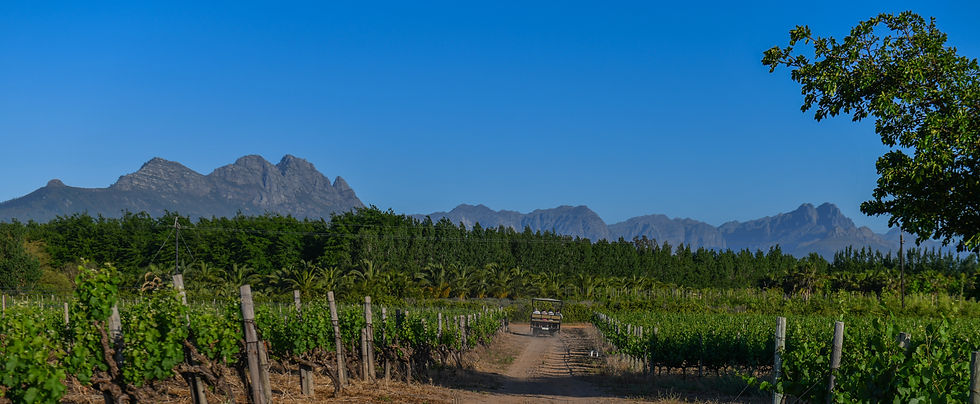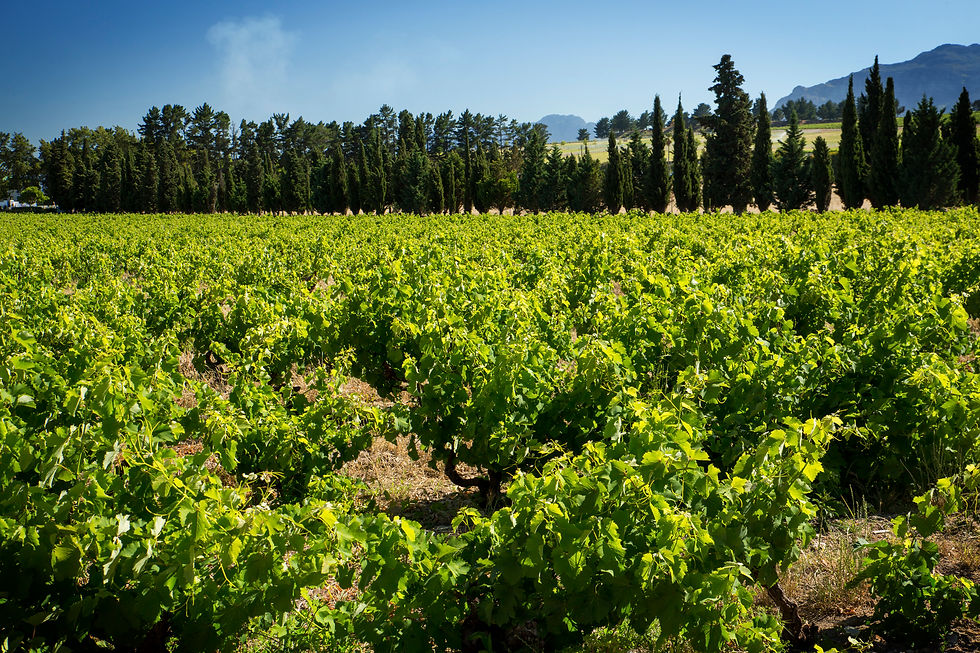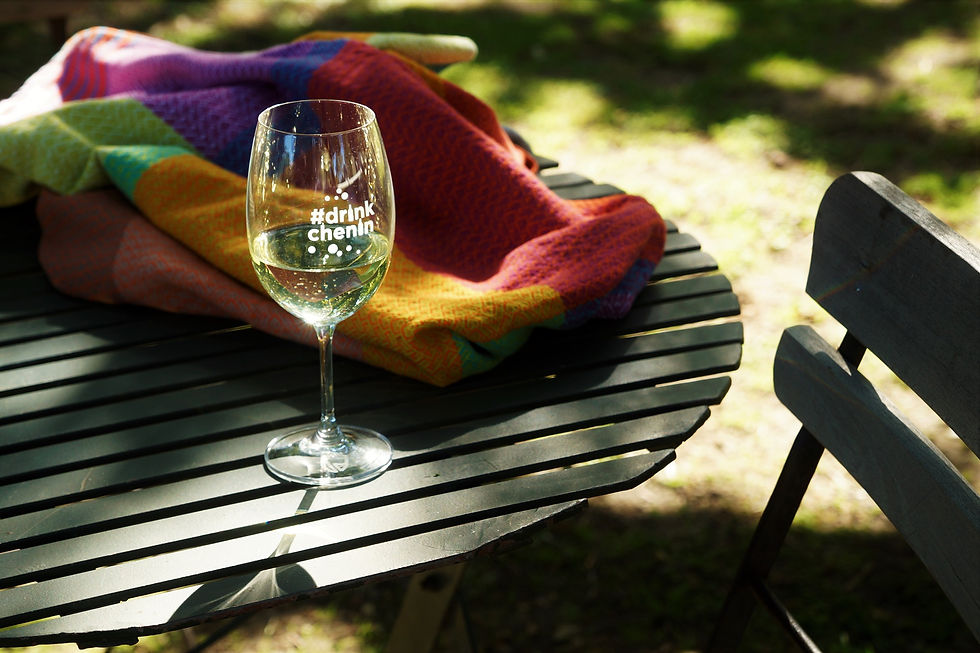

”Chenin Blanc grown on South African soils becomes a thing of great complexity and great beauty. But it's not by trying to emulate the Loire, or anywhere else, that South African Chenin has found its own voice.”
- Tamlyn Currin, writing for jancisrobinson.com

”South Africa's greatest white grape.”
- Tim Atkin, MW, SA Report 2019
RESEARCH
The South African Grape and Wine Research Institute - SAGWRI (previously Institute for Wine Biotechnology) at Stellenbosch University and the Chenin Blanc Association (CBA) of South Africa, joined forces in 2010 with ongoing research projects on SA Chenin Blanc wine.
Here are a few of the projects:
Research on Chenin Blanc old vines (40 year and older)
Research started in late 2014 on quality and sensory aspects of older vines. This project is continuing in 2016 and focused additional studies on characteristics of specific vineyard blocks of interest, and the effects of specific viticultural and winemaking practices are on the research agenda. Also In-depth chemical profiling of Old vine Chenin Blanc wines and components associated with mouthfeel and aroma.
Platter's South African Wine Guide helps Chenin Blanc wine research
Valuable insights into Chenin Blanc styles were gained from research 2010-2012. In order to expand the sensory database, the sensory descriptors in the Platter's South African Wine Guide were used for Chenin Blanc dry- and off-dry wines, entered from 2008 to 2014. The Platter data contributed towards clarifying the complex, and sometimes confusing sensory descriptions for the Chenin Blanc wine consumer. The findings were be made available to the Platter's Guide, the wider wine industry, as well as via scientific papers and at presentations.
SENSORY ANALYSIS TOP 10 CHENIN BLANC WINES
CHENIN DATA WAREHOUSE
Multi-cultural comparison of wine sensory perception: can consumers familiar with Chenin Blanc distinguish between French and South African Chenin Blanc wines?
Consumers familiar with Chenin Blanc from France and South Africa respectively, were evaluated whether they were able to differentiate between French and SA Chenin Blanc wines using undirected and directed sorting tasks. Using a test set consisting of 14 wines (7 of each country), 100 French consumers tasted the wines in one location in France, while 100 SA consumers tasted the same set in one location in South Africa. Provisional results showed that consumers from both countries could not assign all the wines in the test set correctly to their respective countries of origin. The implications and final results of these findings for benchmarking of SA Chenin are available on request.
SA Chenin Blanc wine style research: chemical and sensory profiling
Various research projects were conducted on the chemical and sensory profiling of Chenin Blanc:
Profiling of sweet wines including Noble Late Harvest (Other cultivars beside Chenin were also included)
~SLH, NLH, straw wines and natural sweet wines
Descriptive analysis (DA) – sensory profiling; GC-FID – chemical analysis ; Aroma wheel – sweet wines
Hanneke Botha |Honours 2010
Chemical and sensory profiling of fresh and fruity, rich and ripe: unwooded and rich and ripe: wooded Chenin wines
~50 wines profiled DA – sensory GC-FID – chemistry
Sorting – style classification by experts
Lindi van Niekerk | van Antwerpen | Masters 2013
Chemical, sensory and consumer profiling of Chenin blanc bush vines
~50 wines profiled
DA – sensory
GC-FID – chemistry
Effect of label cue, old vine and bush vine – consumer liking
Evette Hanekom | Masters 2013
Classifying South African Chenin blanc wine styles
~12 wines from FF, RRU and RRW styles ; DA and sorting – sensory profiling and evaluation of classification system
Investigating Chenin blanc wine style preference drivers and consumer Y insights – 150 Western Cape wine consumers
Inneke Bester | Masters 2011
Volatile metabolic profiling of Chenin blanc wine: GC-MS method development
~48 wines – quantification of aroma compounds (N = 57 analytes)
GC-FID – profiling
New method development
Nina Lawrence | Masters 2012
Sensory and chemical profiling of Chenin blanc wines produced by natural fermentation and skin contact
~Wines produced by natural fermentation (no inoculation of yeast) and different periods of skin contact
Sensory profiling
Consumer preference
Carla Weightman | Masters 2014
THIOL LEVELS IN YOUNG CHENIN BLANC
YAN AND AMINO ACIDS
FOLIAR SPRAY
Development of rapid sensory profiling methods for wine evaluation
Rapid descriptive sensory evaluation methods for white wine
~Chenin blanc and Sauvignon blanc
Flash profile, CATA, Sorting, Projective Mapping/Napping, PSP
Comparison of configurations of rapid methods to that obtained with DA
Jeanne Brand | PhD 2017
Sensory evaluation of mouthfeel attributes of old-vine Chenin blanc wines
~20 old vine wines
Training of DA panel – evaluation of complexity, fullness, length, balance and mouthfeel attributes.
Sensory evaluation of wines by trained panel
Testing of rapid sensory method PSP for evaluation of mouthfeel attributes
Renee Crous | Masters 2016

The diversity of Chenin Blanc makes for food-friendly delicious wines but does pose a challenge for the consumer – how can you be sure you buy the wine in the style you love?
Consumer research conducted on Chenin Blanc perceptions.
In the bottled South African white wine category, almost three times more Sauvignon blanc
was sold per annum than either Chardonnay or Chenin Blanc for the period 2011-2020
(SAWIS,2022). However, Chenin Blanc, South Africa’s most planted wine grape, representing
18.6 per cent of all vineyards and 34 per cent of the white grape production used for wine
making purposes, only contributed 5 per cent to the total domestic bottled single varietal
white wine sales in 2020 (SAWIS, 2022).
Wine consumption habits and preferences are often acquired from previous generations, and
it require some experience (Melo et al., 2011) to rationally evaluate attributes, prior to and
post the purchase (Lockshin and Cohen, 2011).
Wine, as a category, elicits significant uncertainty, i.e. perceived risk, especially amongst younger and less experienced consumers (Spawton, 1991).
As South Africa does not have an established wine drinking culture, many consumers are inexperienced wine consumers. Locally, bottled still wine is mostly marketed using the varietal name as differentiator on the front label.
A number of research projects were conducted in 2018 and 2019 to investigate the apparent sales barriers specific to Chenin Blanc from the wine consumer’s perspective:
(Nadia Van der Colff; Chris Pentz and Hélène Nieuwoudt)
(Andiswa Mapheleba, Chris Pentz, Nina Muller, Ivan Oertle and Hélène Nieuwoudt)
(Carla Weightman, Nic Terblanche, Dominique Valentin, Florian Bauer and Hélène Nieuwoudt)
The research showed that a lack of experience (subjective knowledge and purchase
frequency), quality variations and occasions were identified as “varietal risk” drivers during
instore purchase decision making. Chenin Blanc was identified as a high-risk varietal. Most
South African wine drinkers buy their wine from a general supermarket and being time pressed, they don’t want to spend too much time in the wine aisle faced with uncertainty
about styles’ sensory profiles.
Consumers indicated that the following would reduce their risk when buying Chenin Blanc:
-
in-store tastings (53 per cent);
-
promotions at restaurants (45 per cent);
-
discount price promotions (37 per cent);
-
food pairing events (35 per cent), and
-
information about how Chenin Blanc is different from other varietals (33 per cent).
These findings stressed the importance of sensory exposure and experience ahead of
information and advertising without tastings. Name brand is the most important risk
reducing strategy. Brand loyal consumers’ behaviour is often based on the convenience of
repeating the same purchase, and to a lesser degree on knowledge of product attributes.
In-store tastings are not a scalable activity to address these risk factors and to provide
consumers with the sensory information they view as most important in the wine purchase
decision-making process, the back label style indicator was developed by the Chenin Blanc
Association in collaboration with SAGWRI, Stellenbosch University. A consumer survey was
done in 2021 to test the device, using sensory terms identified on the Chenin Blanc aroma
wheel, to describe the styles as Fresh, Fruity, and Rich.
The use of style indicator is not a reflection of the chemical composition of the wine, but rather the sensory perceptions when tasting the wine, and it aims to directly address the risks that
consumers associate with buying Chenin Blanc.

